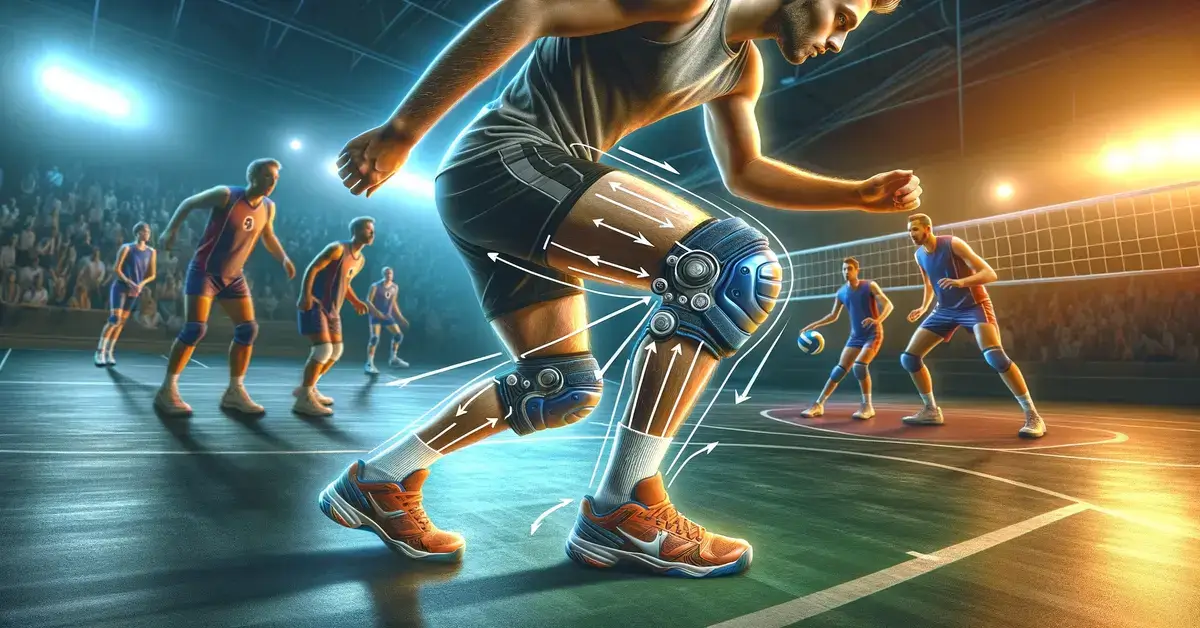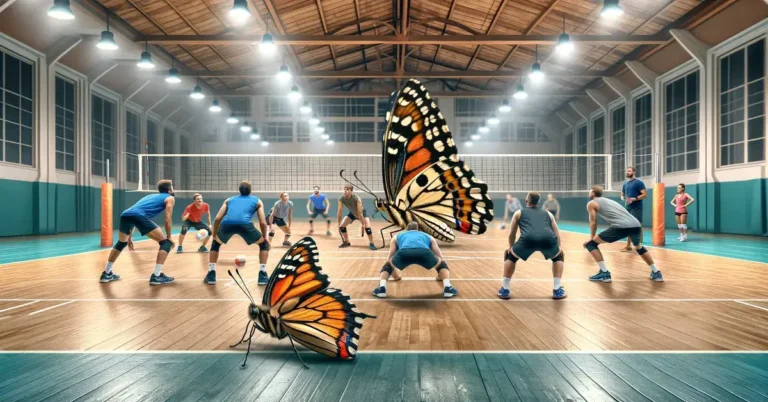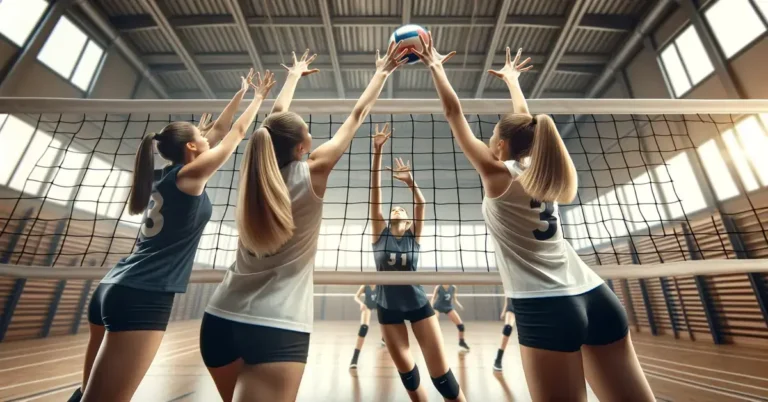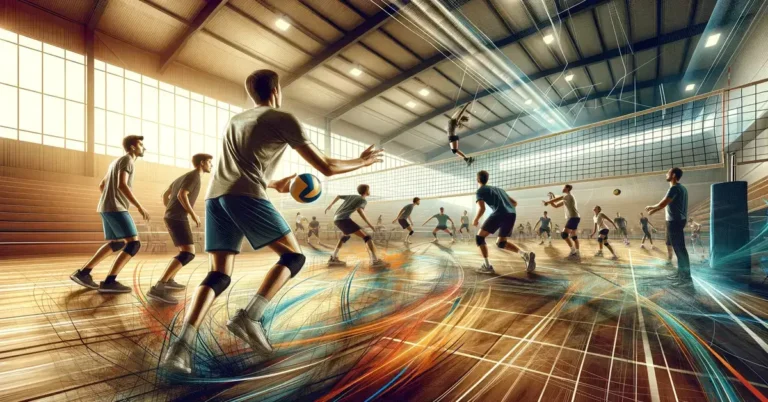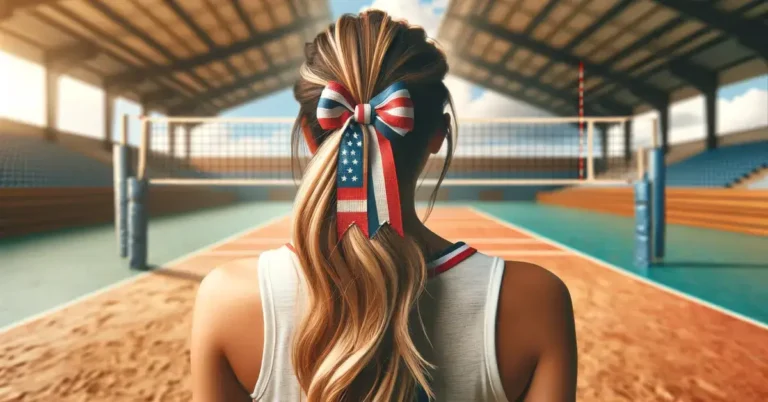When you think about how to get out the best of your volleyball play the question how to wear volleyball knee pads probably won’t come up in first place. But I can tell you, that knee pads are one of the most underrated game changers in volleyball.
Of course initially they are meant to be used for comfort and safety. But I have a thesis that those small fabric parts have more power than you might trust them.
The secret of volleyball knee pads is that when wearing them, you don’t have to worry about getting hurt, how to land safely and so on. You can just concentrate on your play and follow your trained instincts. That makes your brain clear and your head focus on the match.
Choosing the Right Volleyball Knee Pads
Before we dive into the specifics, remember that knowing how to wear volleyball knee pads starts with selecting the right pair. We’re aiming for a balance of comfort, protection, and a fit that won’t interfere with your game.
Size and Fit
Size matters when it comes to volleyball knee pads. A proper fit is crucial for maximum protection and comfort during play. Measure your knee circumference to ensure your knee pads aren’t too tight or too loose. They should snugly hug your knee without restricting circulation or movement.
Material and Design
The longevity and comfort of your knee pads depend heavily on their material and design. Choose options made with breathable neoprene or polyester foam for both durability and a comfortable fit. Designs with moisture-wicking properties help keep your knees dry.
Type and Style
Finally, the type and style of knee pads you choose should reflect your personal preference and the level of play. Some knee pads offer extra padding for aggressive play, while others prioritize flexibility and range of motion. Consider pads with adjustable straps for a customizable fit.
How to wear volleyball knee pads: Proper Fit and Positioning
When we hit the court, knowing how to wear volleyball knee pads correctly is essential for our safety and agility. Finding the balance between a snug fit and proper positioning is crucial for protecting our joints during play.
Finding the Snug Fit
A snug fit means that the knee pads stay in place during movement without cutting off circulation. To ensure proper fit, we should measure our knee circumference while our leg is slightly bent. The knee pad should compress the area comfortably, allowing us to move freely without the knee pad sliding down. If the knee pad has adjustable straps, we can use them to secure the fit further.
Correct Positioning Technique
For proper placement, the knee pad should sit below the knee joint. This positioning allows for protection when we fall, as well as a full range of motion when we jump. A good indicator of correct placement is when the knee pad covers the patella (kneecap) and extends an inch or two below. It’s essential that the upper half of the knee can be exposed, permitting a comfortable bend when we’re active on the court. Following these techniques ensures that we maintain the right balance of protection and performance.
Putting on and Adjusting Knee Pads
We all know the sting of a volleyball court burn; that’s why learning how to wear volleyball knee pads properly is essential for both new players and seasoned pros alike. Let’s get straight to the steps, ensuring the knee pads fit snugly and provide the protection you need without sacrificing comfort or mobility.

Steps for Putting On
- Find the Top: Identify the top of the knee pad, which usually has a smaller circumference.
- Insert Your Leg: Slide your foot through the hole, starting with the wider end, and pull the knee pad up your leg.
- Position Correctly: Adjust the knee pad until the thick, padded section is directly over your kneecap, ensuring it isn’t twisted or folded.
Adjusting for Comfort and Security
- Check the Fit: The knee pad should sit just below your kneecap, and it should feel comfortably snug without cutting off circulation or sliding around during movement.
- Readjust as Needed: Throughout your play, if the knee pads shift or begin to feel loose, take a moment to pull them back into place for optimal security and protection.
Remember, properly adjusted knee pads are key to not only feeling comfortable but also staying secure on the court.
Maintenance and Care
When we think about how to wear volleyball knee pads effectively, it’s crucial to also consider their maintenance and care. This approach ensures their longevity and durability, so let’s dive into the best practices for keeping them clean and storing them properly.
Cleaning Methods
Regular cleaning is essential for maintaining knee pads. Here’s how we can keep them in top condition:
- Hand Washing: Use mild soap and warm water to gently scrub the knee pads. Rinse thoroughly to remove all soap residue.
- Machine Washing: If the manufacturer allows, machine wash knee pads in a gentle cycle with similar colors.
Remember to never bleach or use harsh chemicals, as this could degrade the materials. After washing, press out any excess water with a towel before moving on to the drying stage.
If you want to dive deeper into cleaning methods and what to take care about then you might like our post about how to clean volleyball knee pads.
Storing Properly
Proper storage goes a long way in preserving the structure and elasticity of volleyball knee pads:
- Air Dry: Always air dry knee pads completely before storing. Dampness can lead to the growth of bacteria and unpleasant odors.
- Cool and Dry Place: Store your knee pads in a cool, dry environment to prevent the material from breaking down.
By following these cleaning and storing methods, we give our knee pads the best chance to stay clean, functional, and ready for action on the court.
Preventing Injuries with Knee Pads
When we hit the court, the last thing we want is an injury sidelining us from the game we love. That’s why knowing how to wear volleyball knee pads properly is so important; it’s our first defense against common volleyball injuries.
Injury Prevention
Wearing knee pads during volleyball provides a protective barrier that can prevent bruises, scrapes, and more serious injuries. A snug fit ensures that knee pads remain in place to absorb shock from falls and dives, which are frequent during intense play. By cushioning the knee, they also mitigate the force of impact injuries when making contact with the hard ground.
Additional Support
Aside from protection, a good pair of volleyball knee pads offers additional support to the joint. This extra layer can help stabilize the knee, potentially preventing ligament and tendon injuries that can occur during rapid, lateral, or sudden movements. It’s important to select knee pads that both fit well and provide ample padding to ensure injury prevention is maximized.
FAQs
Finding the sweet spot for volleyball knee pad placement isn’t tricky, but it’s vital for both protection and comfort on the court. Let’s dive into some common questions about how to wear volleyball knee pads to ensure you’re geared up correctly for your next game or practice.
How should volleyball knee pads be?
The fit of volleyball knee pads should strike a perfect balance between snug and comfortable. They need to be tight enough to stay in place during dynamic movements but not so tight that they cut off circulation or hinder movement. Look for pads that provide ample cushioning without compromising your ability to jump and dive.
How do you properly wear knee pads?
To wear knee pads properly, slide them on so that the knee pad sits below the knee cap, ensuring that they cover the patella and the upper portion of the shin. The volleyball knee pads guide emphasizes a centered pad on the knee, with the top secure but not restrictive.
Why do volleyball players wear pads below their knees?
Volleyball players wear pads slightly below the knees to allow for proper protection when diving and engaging in floor-based maneuvers. Wearing them lower helps to cushion the knee and surrounding areas without restricting the knee’s full range of motion. The placement allows players to move fluidly and protects their knees upon impact with the ground. Understanding the proper placement of volleyball knee pads is essential for players at any level.
Are volleyball knee pads supposed to be really tight?
Volleyball knee pads should fit securely without causing discomfort. They are not supposed to be extremely tight; instead, they should feel like a second skin that allows for complete freedom of movement. Properly fitting knee pads can boost your confidence on the court by ensuring that you are protected without feeling hindered by your gear.
We hope you could find some valuable input about how to wear volleyball knee pads. We would be curious about your opinion and experience: What knee pads do you use? Have you already felt any difference in using black or white ones? Let us know in the comments.
If you liked this article you might also like to dive a little bit deeper into our articles about other volleyball outfits.

